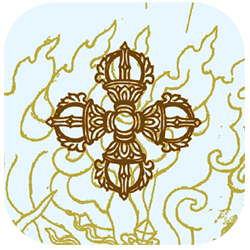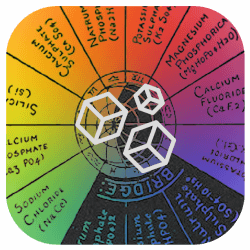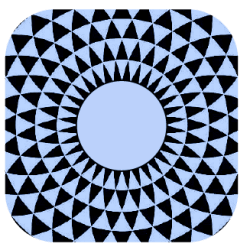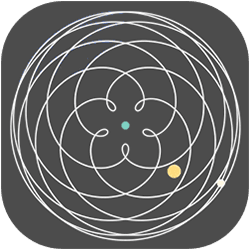Introduction
The pyramid stands as one of humanity’s most enigmatic structures, a geometric marvel that has captivated the imagination of scholars, mystics, and seekers for millennia. Far beyond its architectural significance, the pyramid represents a complex web of spiritual symbolism, celestial alignments, linguistic origins, and occult connections that transcend conventional historical narratives. This comprehensive guide delves into the profound relationship between the pyramid and Amun, the “Hidden God,” exploring the etymological roots, occult symbolism, and metaphysical implications that lie beneath the surface of mainstream understanding.
Drawing from ancient Semitic, Egyptian, and Canaanite traditions, we will examine how the pyramid served as more than a tomb or monument—functioning instead as a multidimensional nexus connecting human and divine realms, earthly and celestial domains, and material and spiritual planes of existence.

Etymology and Linguistic Origins – The Haram-Harim Connection
The linguistic origins of the pyramid reveal profound insights into its original purpose and symbolism. The Arabic word for pyramid, ‘haram,’ derives from the compound meaning “mountain people” (the Aamu or Westerners/Asiatics). This etymology creates a direct link between the physical structure and its builders, suggesting that pyramids were not simply monuments but expressions of identity for a specific cultural group.
‘Haram’ is intimately related to ‘harim’ (a prohibited place) and the English word ‘harem,’ adding layers of meaning associated with forbidden knowledge and sacred space. This connection is not coincidental—it reveals an ancient understanding that pyramids were sanctuaries of restricted access, containing wisdom and practices deemed too powerful or dangerous for the uninitiated. In Arabic religious contexts, ‘haram’ also means “unlawful,” which parallels the Hebrew ‘herem’ (curse), reinforcing the notion that these structures were repositories of knowledge beyond conventional religious boundaries.
The linguistic web surrounding the pyramid extends further into concepts of prohibition, sanctity, and danger. The same root that gives us the pyramid (‘haram’) connects to sacred precincts, forbidden acts, and divine punishment—suggesting that the pyramid itself was understood as a liminal space where cosmic laws might be transcended, often at great spiritual risk.
Did you know? The etymological connection between pyramids and forbidden spaces suggests that ancient knowledge keepers understood these structures as containers of potentially dangerous wisdom. Learn more about sacred architecture and forbidden knowledge.
The People of the Altar
The term ‘haram’ (pyramid) signifies “the people of the altar,” establishing a profound connection between the pyramid structure and sacred ritual functions. This designation transforms our understanding of the pyramid from a static monument to a living temple—a place where cosmic energies were channeled and where communion between worlds was facilitated through ritual sacrifice and offering.
The pyramid-as-altar concept reveals how these structures served as cosmic interfaces—points where human intention and divine presence could merge through ceremonial action. The monumental scale of the pyramid itself becomes meaningful in this context; it is not merely impressive architecture but a physical amplification of the altar’s function, magnifying the ritual power of the ceremonies conducted within and upon it.
The relationship between mountain and pyramid connects to profound mythological narratives concerning angelic rebellion and ancient royal lineages. Just as sacred mountains were understood across cultures as meeting places between heaven and earth, the pyramid represents an artificial mountain—a human-created axis mundi that replicates and enhances the cosmic function of natural peaks. The precision of pyramid construction suggests an attempt to optimize this cosmic connection, creating a mathematically perfect conduit between realms.
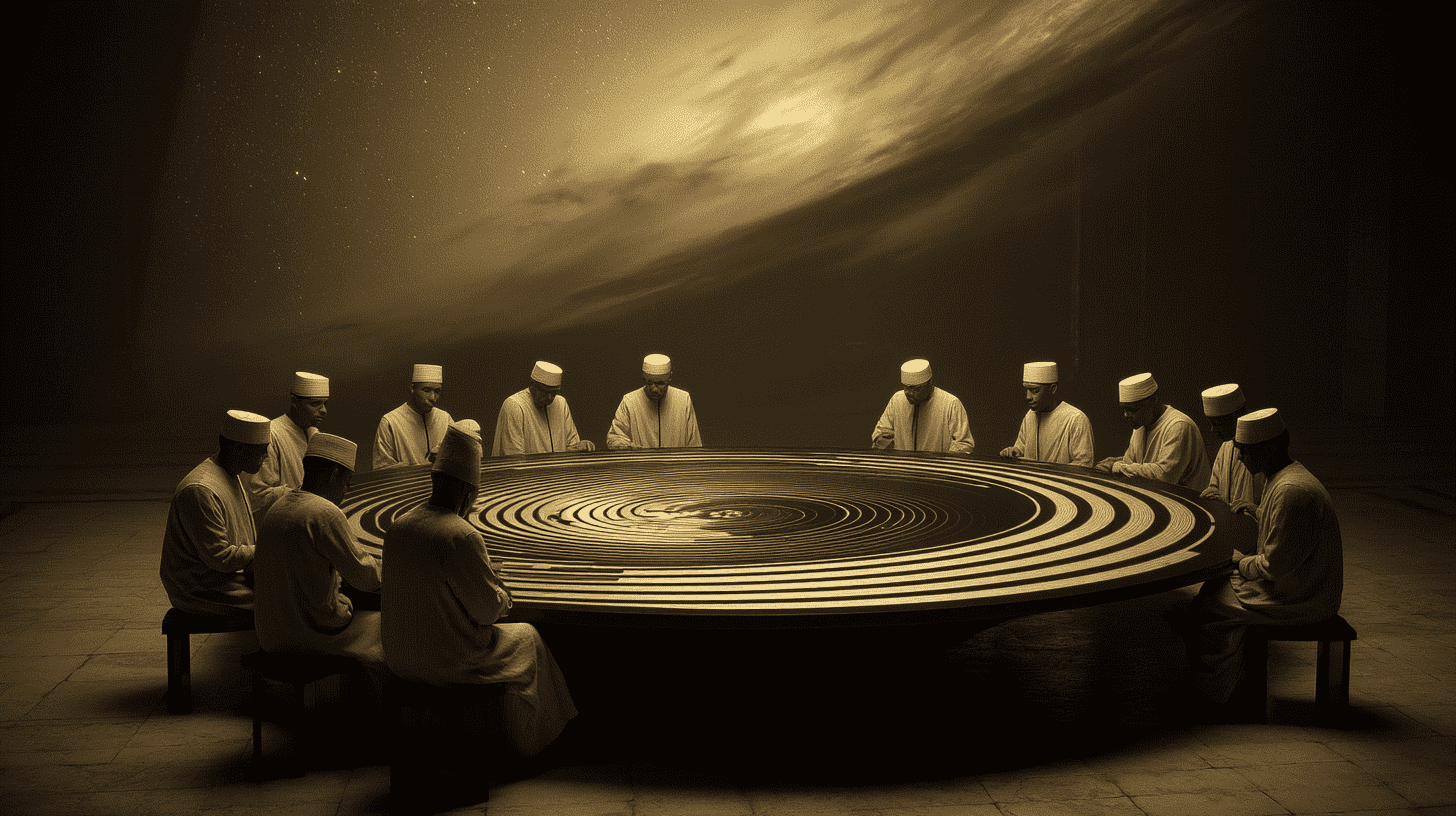
The Builders: Identity and Origins – The Aamu Connection
The traditional attribution of pyramid construction exclusively to indigenous Egyptian populations faces significant challenges when we consider deeper etymological and historical connections. The builders of the pyramids are identified as the Aamu, a designation referring to Westerners or Asiatics who brought advanced astronomical and architectural knowledge from beyond Egypt’s borders.
These Aamu, also referred to as ‘haram’ (mountain people), represent a cultural bridge between different ancient civilizations. They were descendants of Ham through Lot, forming a distinct genealogical line that carried specialized knowledge across geographical boundaries. Their identity intertwined with the people known as Amurru, establishing connections between Egyptian pyramid builders and Mesopotamian cultures.
Their association with Amun, the “Hidden God”, reveals that pyramid construction was not merely an architectural endeavor but the physical manifestation of a sophisticated cosmological system. The Aamu’s connection to the Western Sun (Martu) and geographical origins in Syria (Aram) suggests a transfer of sacred knowledge from the Fertile Crescent into Egypt, challenging the narrative of isolated Egyptian development.
Some esoteric traditions even propose cosmic origins for these builders, symbolically linking them to Mars (connected linguistically to Martu/Martian), suggesting that the knowledge of pyramid construction may have had celestial or extraterrestrial inspiration—a concept that appears repeatedly in various ancient texts discussing the transfer of divine knowledge to humanity.
Western Priesthood and Hidden Knowledge
The Aamu formed what can be described as a “Western Priesthood”—a specialized class of knowledge-keepers who introduced Amun theology to Egypt and supervised the construction of pyramids as physical embodiments of their cosmological understanding. This priesthood wasn’t merely religious in the conventional sense; they were custodians of astronomical, mathematical, and architectural sciences integrated within a spiritual framework.
The pyramid’s outer facing functioned as a cosmic beacon or altar, marking what ancient records describe as an “angelic insurrection” allied with this hidden Western priesthood. This suggests that pyramids served as massive communication devices—structures designed to interface with celestial intelligences through their precise alignments, proportions, and ritual functions.
These knowledge-keepers understood the pyramid not just as a tomb but as a machine—a geometric device that harnessed cosmic energies through its perfect proportions and alignments. The mathematical precision of pyramid construction reveals that its builders possessed advanced understanding of geometric principles, astronomical cycles, and the harmonic relationships that govern both music and celestial movements.
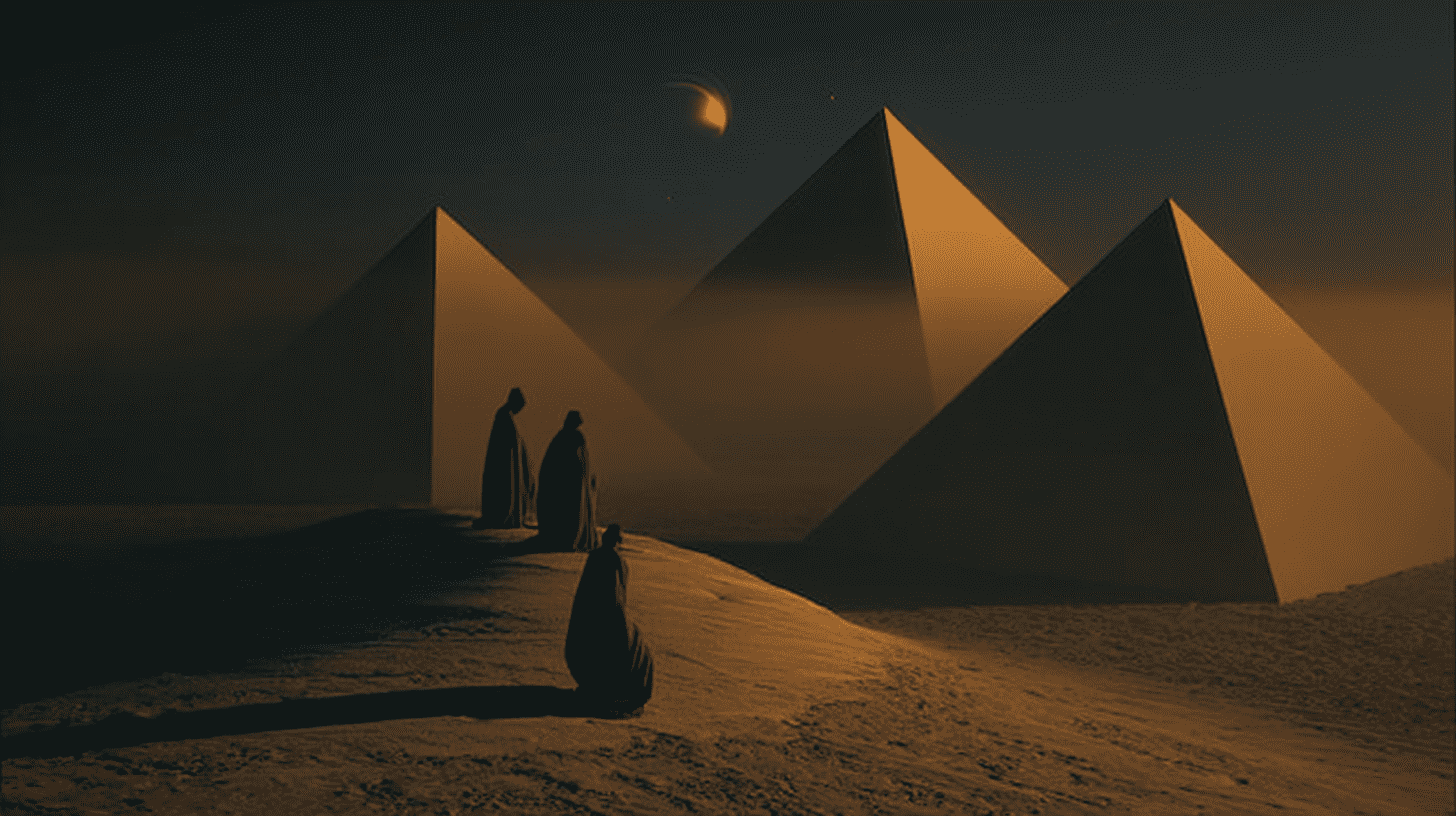
Amun: The Hidden God Behind the Pyramid – Identity and Nature of Amun
Amun, whose name literally means “the Hidden One,” emerges as the central divine figure connected to pyramid symbolism and function. While conventionally regarded as the local god of Thebes, deeper analysis reveals Babylonian origins, connecting Amun to earlier Mesopotamian traditions brought into Egypt by the Amorites and during the time of Hammurabi.
Amun manifests through sophisticated symbolic representations that reveal his paradoxical nature. Predominantly depicted as a ram, sometimes with amphibious qualities, this symbolism conveys both creative potency and adaptability between different elemental realms. The ram insignia signifies his simultaneously revealed yet concealed nature—visible yet incomprehensible in his totality.
The crescent moon symbol associated with Amun connects him to nocturnal wisdom, cyclic time, and the Western traditions that worshipped lunar deities. This connection to the moon god Qamar strengthens the link between Amun and the priesthood (komer), establishing a direct relationship between lunar cycles and sacred ritual timing.
Amun’s association with water further emphasizes his hidden nature—like depths that conceal mysteries below the surface. This water symbolism potentially connects him to the Akkadian deity Ea (house of water), who was similarly associated with the moon and often depicted with fish-like qualities, suggesting a common mythological ancestry for these seemingly distinct deities.
The observation that Horus’s facial markings silhouette the ram’s horned profile creates a hidden connection between these divine figures, suggesting that Horus himself may be understood as a manifestation or aspect of Amun, revealed through visual encoding in Egyptian iconography
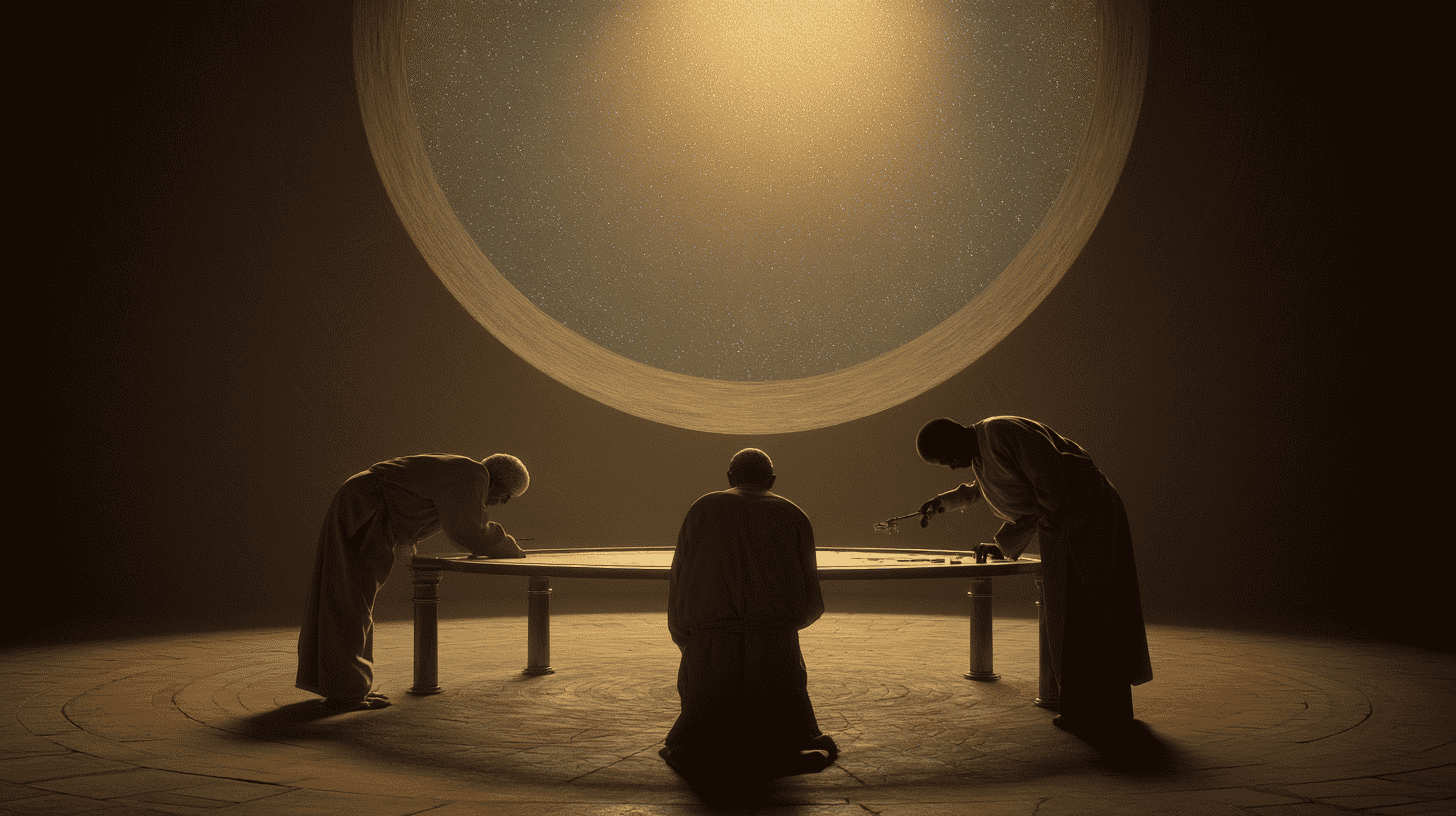
Cultic Practices and Beliefs
The priesthood of Amun established what can be understood as a sophisticated death and resurrection cult, centered on the regeneration narrative of Osiris. This cult wasn’t merely focused on death as finality but on the transformative process of dying and being reborn—a cosmic pattern reflected in natural cycles and celestial movements.
The sacrifice of the ram held profound symbolic significance in Amun worship, representing a substitution offering that replaced more ancient practices. This substitution narrative connects surprisingly to Abrahamic tradition, where a ram replaced Isaac as sacrifice, suggesting hidden continuities between seemingly disparate religious systems and potentially revealing the ram sacrifice as a symbolic evolution from earlier human sacrifice practices.
The hidden rites of Amun, consistent with his identity as “the Hidden One,” involved ceremonies conducted away from public view, accessible only to initiated priests who understood the deeper metaphysical principles involved. This secrecy wasn’t merely exclusionary but protective—preserving knowledge that required proper preparation and context to be safely and effectively implemented.
The death and resurrection symbolism central to Amun’s cult correlated specifically with nocturnal priesthood activities and lunar cycles. His resurrection involved the concept of the “risen lamb”—the renewed Amun connected to necromantic practices and the ascendant hawk symbolism of Horus. This complex of symbols reveals an understanding of death not as annihilation but as transformation and ascension to higher states of being.
The Pyramid’s Multidimensional Functions – Cultic and Religious Center
The pyramid functioned as far more than a royal tomb—it served as a cosmic altar where offerings established communion between human and divine realms. This altar function included ceremonies involving firstborn sacrifice (either literal in earliest practices or symbolic in later evolutions), establishing and maintaining covenants between humanity and celestial powers.
As a structure signifying “the people of the altar,” the pyramid physically embodied the human community’s relationship with divine forces. Its geometric form created a perfect energetic conduit through which prayers, offerings, and intentions could ascend to higher planes, while divine energies and blessings could descend to earth.
Some ancient records make disturbing connections between pyramid cult practices and sacred sexuality rituals, including what they describe as “sexual molestation of the virgin.” This controversial aspect suggests that certain pyramid ceremonies involved hierogamic (sacred marriage) practices that were later condemned as exploitative by reformist traditions. These sexual rites connected to Mount Hermon traditions regarding fallen angels and their interactions with humanity, suggesting that such practices were understood as re-enactments of primordial communions between human and divine beings.

Marker of Angelic/Royal Power
The pyramid served as a physical beacon marking angelic presence and authority—a monumental declaration of celestial sovereignty on earth. Associated specifically with accounts of fallen angels and the events on Mount Hermon, the pyramid structure stood as a permanent reminder of cosmic hierarchies and the supernatural origins of earthly kingship.
As a symbol connecting to Horus and divine kingship, the pyramid physically manifested the concept of divine right to rule. Its perfect form, rising from a square base to a singular point, visually represented the channeling of multiplicity into unity—a geometric expression of how divine authority flows from heaven to earth through the person of the divinely-appointed king.
The pyramid’s form simultaneously mimicked mountains and stars, creating a dual reference to cosmic geography. This dual symbolism established the structure as a meeting point between terrestrial and celestial realms—a place where the king or priest could ascend symbolically to the stars while celestial beings could descend to influence earthly affairs.

Site of Procreation/Harem
Perhaps the most controversial function attributed to the pyramid is its role as a “royal chamber” or “angelic harem” facilitating the propagation of human-angelic bloodlines. Ancient texts describe the pyramid serving as a consecrated space where human and divine unions took place—encounters designed to produce offspring with heightened abilities and cosmic connections.
These sacred sexual encounters were not viewed merely as physical acts but as ceremonies that bridged dimensions, allowing genetic material from different orders of being to combine. The pyramid’s enclosed chambers provided the energetically protected environment necessary for such boundary-crossing unions—spaces where the vibrational frequency of human participants could be raised to survive contact with higher-dimensional entities.
This understanding is symbolically encoded even in Egyptian royal garments, where the Pharaoh’s loincloth forms the pyramid shape (‘haram’), visually connecting the royal generative organs to the pyramid structure itself. This symbolic correspondence links the royal harem, the propagation of human-angelic bloodlines, and specific celestial bodies like Venus and Sirius that were understood as the origins of certain divine lineages.
Symbol of Power Structure and Control
Beyond its physical presence, the pyramid embodied a conceptual model of societal organization—a “pyramidal structure” that ordered society through hierarchical distribution of resources, knowledge, and power. The physical pyramid thus served as both literal structure and metaphorical blueprint for social organization.
This organizational model placed the divine king at the apex, with priests and nobles forming intermediate layers above the broader population base. Knowledge and resources flowed from top to bottom in carefully controlled measures, while energy, labor, and offerings flowed from bottom to top—creating a perpetual cycle of exchange between rulers and ruled, mirror-reflecting the cosmic exchange between gods and humanity.
Built by the ruling Aamu/Hyksos elites, the pyramid physically manifested their authority and cosmological understanding—a three-dimensional model of reality as they perceived it, with all elements in hierarchical relationship. This dual function as both physical structure and organizational model ensured that the pyramid shaped not only the landscape but the consciousness of the civilization that created it.

Celestial Alignments and Cosmic Geography – Star Alignments and Cosmic Geography
The pyramid established precise mathematical relationships with celestial bodies, creating an architectural star map that oriented sacred space to specific cosmic reference points. Rather than random decorative alignments, these connections linked the pyramid to stars believed to be the original homes of various celestial beings who influenced earth’s development.
Sirius, the brightest star in the night sky, held special significance in this cosmic geography. Connected to the Seraphim—described as fiery serpent beings of the highest angelic order—Sirius was understood as the point of origin for key divine intelligences who shaped human evolution. The pyramid’s alignment with Sirius created a permanent energetic connection to these beings and their realm.
Venus alignments connected the pyramid to cycles of death and rebirth, as this planet appears alternatingly as morning and evening star. This celestial body was linked directly to royal bloodlines and their propagation, with specific pyramid features designed to harness its influences for dynastic continuity and divine conception ceremonies.
Orion constellations, associated in ancient texts with the Nephilim and Giants, formed another key alignment point for pyramid structures. The famous “Orion correlation” of the Giza pyramids wasn’t merely symbolic but functional—creating a direct energetic connection to cosmic forces associated with these powerful hybrid beings who bridged human and divine realms.
These alignments transformed pyramids from static monuments into dynamic technologies—stone machines that interacted with celestial cycles and channeled specific cosmic forces according to astronomical timing. The precision of these alignments suggests that pyramid builders possessed not only advanced astronomical knowledge but understanding of how to convert celestial geometries into terrestrial energy systems.
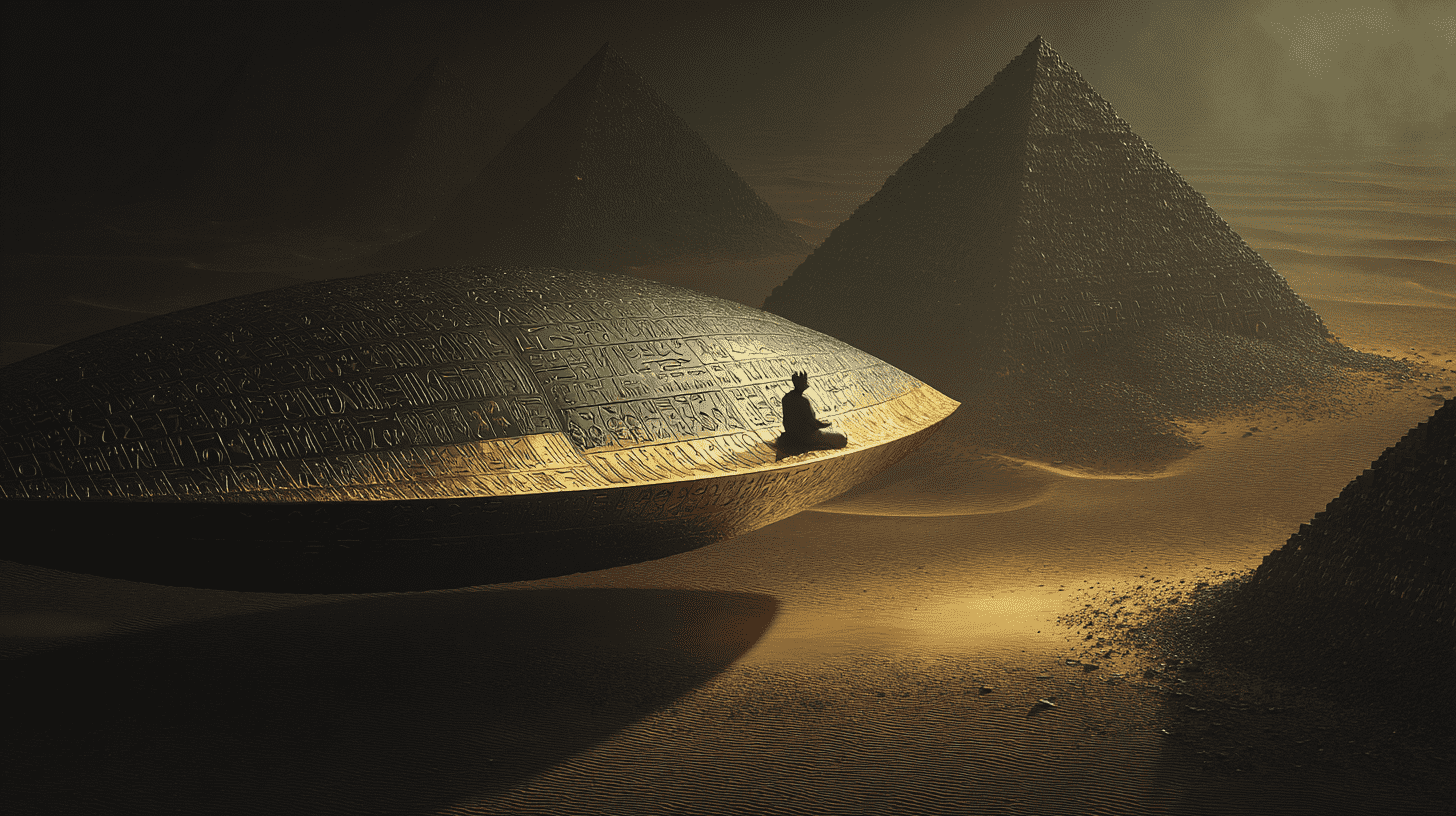
Ophanim and Cosmic Vehicles
Ancient texts describe intriguing connections between pyramids and the Ophanim—celestial “Wheels” or “Thrones” that functioned as divine vehicles. This relationship suggests that pyramids may have served as landing sites or markers for these cosmic vehicles, creating designated interface points between terrestrial and celestial transport systems.
As transport nodes for angelic beings, pyramids would have required specific geometric and energetic properties to facilitate the dimensional transitions involved in such visitations. The perfect mathematical proportions of pyramids may have created the precise vibrational environment necessary for beings from higher dimensions to materialize in physical form.
The pyramid’s function as a physical representation of the divine Throne established it as a place where cosmic authority was manifested on earth—a seat of power where heavenly and earthly governance converged. This Throne function connected directly to ceremonies of kingship and divine authority, with the king serving as the human representative of celestial powers.
Pyramids also acted as ascension points—places where the human consciousness could be raised through specific ceremonies to access higher dimensional realities. These ascension functions required precise architectural acoustics and electromagnetic properties, explaining the careful selection of materials and positioning of chambers within the pyramid structure.
The cosmic covenant between celestial and human realms found physical expression in the pyramid, which stood as a monumental contract in stone—a permanent reminder of agreements between humanity and divine intelligences that governed cosmic relationships and mutual obligations.
The Seraphim-Kerubim Dialectic
The ancient understanding of cosmic forces reveals a profound dialectic between two primary angelic orders that shaped both celestial and terrestrial affairs:
Seraphim: The Fiery Serpent Beings
The Seraphim represented the highest order of angelic intelligence—non-human beings often described as serpentine or dragon-like in their essential nature. Their name derives from the Hebrew ‘srefa’ meaning “fire,” identifying them as beings composed of or manifesting as living flame. Rather than the benign winged humans of later religious art, original accounts describe them as terrifying serpentine beings whose appearance instilled dread.
These entities originated from Sirius, described in ancient texts as the “Scorching Star,” establishing their extraterrestrial nature. Their appearance as beings of light or fire connects to numerous accounts of divine manifestations across various traditions, where beings of intense luminosity interact with human witnesses.
Within the cosmic governance structure, Seraphim represented the controller element—the thesis or initial proposition of power. Their association with the “Upper House” or “Lords” in cosmic politics positioned them as the aristocratic or ruling class of divine beings, whose authority flowed from inherent power rather than delegated responsibility.
The Seraphim embodied the non-human, alien, or serpentine aspect of divine intelligence—beings whose consciousness operated according to principles fundamentally different from human understanding. Their association with Pythagorean philosophical traditions connected them to mathematical perfection and cosmic harmony expressed through number and proportion.
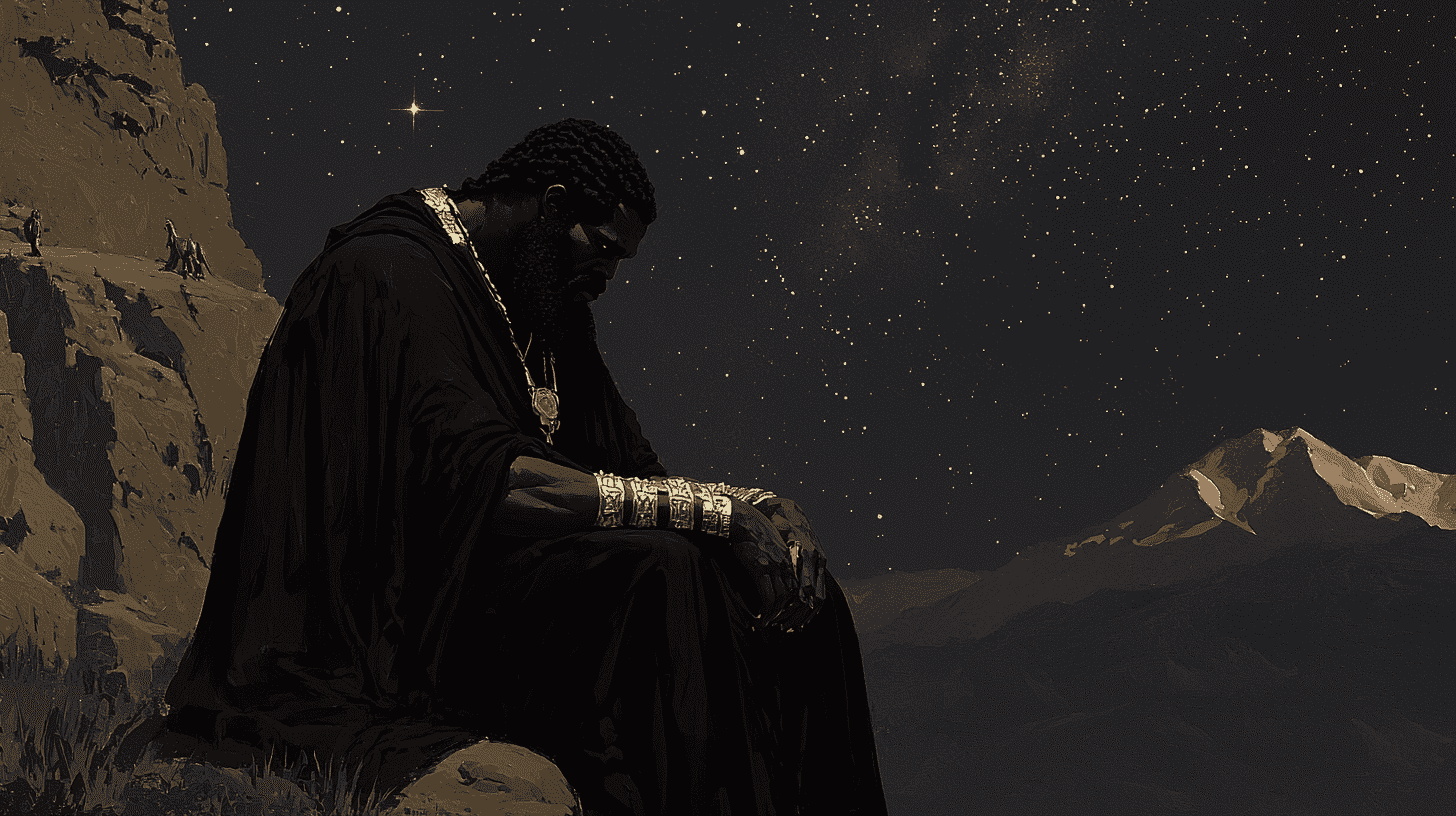
Kerubim: The Sword-Bearing Protectors
The Kerubim occupied the second highest rank in the angelic hierarchy some of their escapades are recorded in The Book of the Giants as —Proto-Human beings distinct from yet related to humanity. Their name derives from the Hebrew ‘kherev’ meaning “sword,” identifying them as armed guardians or protectors who enforced cosmic boundaries and protected sacred spaces.
Unlike the Seraphim, the Kerubim originated from the Pleiades star system, establishing a different cosmic lineage and nature. Their association with the color orange or amber (connected to the ‘Hashmallim’ angel rank) visually distinguished them from the fiery red of the Seraphim, signifying their different composition and function.
The Kerubim represented the human or Proto-Human element in cosmic governance—the antithesis or counterproposition to Seraphic control. Their association with the ‘Rabbi’/’Levite’ Priesthood and the “Lower House” or “Commons” positioned them as representatives or advocates for the human element within the cosmic political structure.
As armed guards or “marines” of the divine Host, Kerubim served alongside the Seraphim but maintained a distinct identity and function. Their lineage formed the template for the later Adamic race, suggesting that humanity itself may be understood as an evolution of or derivation from Kerubic essence—explaining the persistent theme across traditions that humans were created “in the image” of divine beings.
Pyramid as Synthesis Point
The pyramid’s geometric form physically manifested the resolution or synthesis between these opposing cosmic forces. Its square base represented the material, human, or Kerubic element, while its triangular sides rising to a singular point represented the ascension toward unity and transcendence associated with Seraphic consciousness.
As a meeting point between serpent and human, Seraphim and Kerubim, heaven and earth, the pyramid facilitated the integration of these seemingly opposed principles. Its function as a “royal chamber” or “angelic harem” directly connected to this synthetic purpose, as it provided the sacred space for the creation of hybrid bloodlines (Nephilim) that combined both angelic lineages.
The perfect mathematical harmony of the pyramid’s proportions expressed the ideal balance between these cosmic forces—a geometric resolution of the tension between opposing principles. This synthesis didn’t eliminate the distinction between Seraphic and Kerubic elements but integrated them into a higher order unity that transcended their individual limitations.

The Nephilim Connection
Ancient records establish profound connections between pyramids and the Nephilim—the offspring of divine beings and human women who embodied the genetic synthesis of celestial and terrestrial nature.
The construction of pyramids connected directly to traditions regarding offerings of the firstborn—sacrifices that ceremonially acknowledged the divine parentage within certain bloodlines. These offerings weren’t necessarily literal human sacrifices but could include ceremonies of dedication, consecration, or symbolic substitution that maintained cosmic relationships.
The pyramid’s role in propagating human-angelic bloodlines went beyond symbolic representation to active facilitation. Its chambers created the energetic conditions necessary for interactions between beings of different dimensional frequencies, while its positioning in relation to celestial bodies optimized the timing for such unions to produce viable offspring.
Mount Hermon traditions, where fallen angels descended to mate with humans, share symbolic and functional patterns with pyramid technologies. Both represented points of contact between realms—Mount Hermon as the natural mountain where celestial beings first descended, and the pyramid as the artificial mountain that continued to facilitate such interactions under more controlled circumstances.
The royal lineage of Erech, described as a “fallen lineage,” connects directly to these traditions of divine-human hybridization. This bloodline carried the genetic memory and traits of celestial ancestry, requiring specialized knowledge and technologies (including pyramids) to maintain its unique properties across generations.
These connections suggest that pyramids functioned as sophisticated genetic technologies—structures designed to preserve, activate, and transmit the unique properties of Nephilim bloodlines through energetic resonance with specific celestial forces. Their chambers may have served as repositories for genetic material or ceremonial sites for maintaining these hybrid lineages through ritual and initiatory practices.

The Parallel Society Model
The cosmic dialectic between Seraphim and Kerubim established a template for earthly governance and social organization that continues to influence human institutions. This “Parallel Society” model reveals how these cosmic principles manifest in terrestrial structures:
Religious institutions derive from the concept of ‘religare’ (to bind a ship)—organizational structures that connect or “bind” humanity to cosmic forces through ritual, ceremony, and doctrine. The hierarchical nature of most religious traditions mirrors the cosmic hierarchy, with priesthoods serving as intermediaries between divine realms and ordinary worshippers.
Governmental systems similarly reflect this cosmic template through the concept of ‘kubernao’ (to steer a ship)—organizational structures that guide human communities through established laws, customs, and authority figures. The division between “upper” and “lower” houses in many parliamentary systems unconsciously replicates the Seraphim-Kerubim dialectic.
The “Ship of State” concept found across diverse cultures derives from this cosmological framework—understanding human society as a vessel navigating cosmic currents under the guidance of individuals connected to divine intelligence. Both religious and governmental institutions ultimately serve as manifestations or expressions of this cosmic navigation system.
The pyramid, within this framework, represents a physical anchor point for this parallel governance structure—a “fixed point” where the cosmic hierarchy manifests in material form. Its perfect geometric proportions and alignments create the conditions necessary for ongoing communication between the visible and invisible aspects of this governance system.

Lexicon of Key Terms
Amun
The “Hidden One”—an ancient Egyptian deity later equated with Greek Zeus Ammon and Roman Jupiter Ammon. Represented as a ram or with ram’s horns, Amun embodies the principle of divine concealment. Despite his overt association with Thebes, evidence suggests Babylonian origins connected to the Amorites and Hammurabi, with his true capital potentially at Haran in Syria.
Amun’s priests formed a sophisticated death cult focused on Osiris’s resurrection, connecting their practices to transformation and rebirth rather than mere mortality. The sacrifice of the ram in his worship symbolically replaced earlier human offerings, establishing a pattern of substitution that appears across multiple religious traditions. His mysteries involved concealed rites appropriate to his nature as “Hidden,” with resurrection ceremonies linking the risen lamb Amun to necromantic practices and the ascendant hawk symbolism of Horus.
Aamu
The Westerners or Asiatics identified as the true builders of the pyramids, also known as Amorites, Hyksos, or Martu. These “mountain people” (‘haram’) brought advanced astronomical and architectural knowledge into Egypt from beyond its borders. Descended from Ham through Lot, they formed a distinct genealogical line carrying specialized knowledge across geographical boundaries.
The Aamu introduced Amun theology to Egypt and ruled during the Second Intermediate Period as the Hyksos or “Shepherd Kings.” As the Western Priesthood, they supervised pyramid construction and maintained the cosmological knowledge systems these structures embodied. Their identity as builders connects directly to the linguistic origin of ‘pyramid’ (‘haram’), creating an etymological link between the structure and its creators.
Haram (Pyramid)
The Arabic word for pyramid derives from “mountain people,” connecting the structure to both its builders and its cosmic function as an artificial mountain linking earth and heaven. Related linguistically to ‘harim’ (prohibited place/harem) and ‘haram’ (unlawful), with parallels to the Hebrew ‘herem’ (curse), the term reveals the pyramid’s association with restricted knowledge and cosmic boundaries.
The pyramid functioned simultaneously as altar for offerings, beacon marking angelic presence, royal chamber for propagating mixed bloodlines, and visual model of hierarchical power structures. Its spiritual significance connected to Mount Hermon traditions regarding angelic rebellion and human-divine interaction, positioning the pyramid as a controlled environment for continuing these interactions under ritualized circumstances.
Seraphim
The highest order of angels—non-human, serpentine beings whose name derives from the Hebrew ‘srefa’ (fire). These fiery or flaming entities originated from Sirius, the “Scorching Star,” and formed part of the Angelic Host commanded by divine authority. Their ability to shapeshift allowed them to appear as men despite their fundamentally non-human nature.
Seraphim guarded the divine Throne and participated in humanity’s creation or genetic engineering. Their interbreeding with humans produced the Nephilim or “mighty men” of ancient traditions. Within the cosmic dialectic, they represented the controller element or initial thesis, associated with non-human intelligence, serpentine wisdom, and mathematical perfection expressed through Pythagorean philosophical traditions.
Kerubim
Proto-Human angels occupying the second highest rank in celestial hierarchy, whose name derives from Hebrew ‘kherev’ (sword). These armed guardians originated from the Pleiades star system and formed part of the Angelic Host serving alongside but distinct from the Seraphim. Their association with the color orange or amber visually distinguished them from the fiery Seraphim.
Kerubim functioned as sword-carriers and protected sacred spaces, including the divine Throne. Their lineage provided the template for the later Adamic race, establishing them as humanity’s cosmic ancestors or prototypes. Within the cosmic dialectic, they represented the human element or antithesis to Seraphic control, associated with the Lower House in cosmic governance and the earthly priesthood traditions.
Nephilim
The “mighty men” or “heroes of old” born from unions between divine beings and human women. These gigantic or superhuman offspring embodied the genetic synthesis of celestial and terrestrial nature, carrying traits and abilities beyond normal human capacity. Their existence caused significant disruption to cosmic order, eventually contributing to catastrophic resets like the Flood narrative.
Nephilim represented the synthesis element in the Seraphim-Kerubim dialectic—beings who combined serpentine and human qualities in a new integration. Various ancient cultures preserved memories of these beings through legends of giants, demigods, and culture-bringers who taught humanity advanced knowledge before disappearing in cataclysmic events.
Ophanim
Celestial vehicles or vessels described as wheels, often nested (“wheel within a wheel”), that transported divine beings between dimensions or realms. These intelligent, terrifying constructions emitted fire or light, had “rings” covered with “eyes,” and moved according to the directing intelligence of the divine Spirit. Their association with the divine Throne established them as both transport and seat of authority.
Ophanim functioned as the technological interface between material and spiritual dimensions—constructions that allowed beings of higher vibrational frequency to interact with denser physical realms. Their connection to pyramids suggests these stone structures may have served as landing sites, markers, or energetic complements to these interdimensional vehicles.
Conclusion: The Pyramid as Cosmic Nexus
The pyramid stands as perhaps humanity’s most profound architectural expression of cosmic principles—a structure that simultaneously looks backward to primordial origins and forward to eschatological culmination. In its perfect geometric form, it embodies the highest aspirations of human consciousness to reach beyond the material realm and connect with the divine cosmos, while also potentially serving as a monument to humanity’s darkest encounters with forces beyond our comprehension.
Far from being merely the tomb of a pharaoh, the pyramid represents a cosmic technology—a stone machine designed to facilitate communion between worlds, preserve forbidden knowledge, maintain bloodlines, and anchor celestial forces to earthly geography. Its enduring mystery continues to beckon those willing to look beyond conventional historical narratives and explore the profound metaphysical and occult dimensions embedded in its perfect geometric form.





